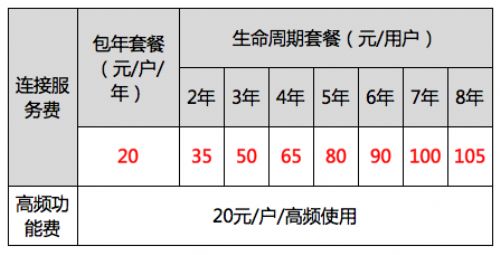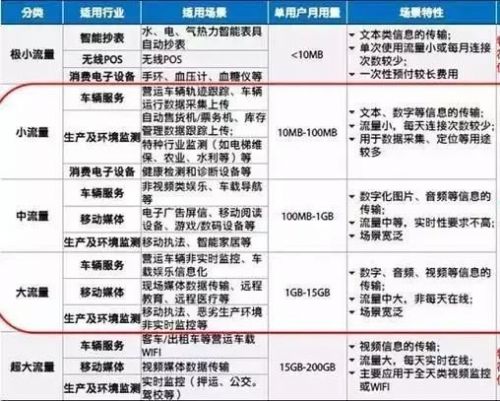China Telecom: China Telecom Internet of Things
The earliest layout of the Internet of Things, providing Internet of Things commercial solutions. Announcement of NB-iot usage fees in June 2017
Layout: nationwide deployment of NB-IoT network and 800M frequency band LTE Cat.1 network
Products: IoT cards, cloud platforms, communication modules (chips)


Very simple billing method, connection fee = total number of telecom NB-loT connections * connection unit price of each NB-loT connection, if the connection frequency is exceeded, additional fees will be charged.
China Mobile:
At the China Mobile Global Partner Conference held in November 2017, China Mobile disclosed the NB-IoT tariff for the first time, and launched a concise and affordable annual package, including 20 yuan and 40 yuan.
More detailed tariffs for this package have not been announced so far.

China Unicom: Charged by traffic (limited monthly data traffic for a single link)


For each "connection", a mode of charging by traffic is adopted--for each NB-IOT connection, a monthly traffic limit is set. If the total traffic of the month exceeds the limit, the excess part will be calculated as an out-of-contract fee.
Two usage modes are set for the tariff: VPDN directional traffic and Internet traffic (ie: general traffic), and the tariff standards for the two methods are different.
A single "connection" is charged according to the monthly traffic, and 3 total monthly traffic packages are set, and the excess traffic is charged according to the "outsourced fee". The tariff package also includes a "platform usage fee" of 1 yuan per month.
IoT cards are generally divided into large traffic (1024M), medium traffic (150-1024M), small traffic (10-100M) and very small traffic (<10M) according to the monthly traffic standard of a single user.
Application scenarios of IoT cards divided by traffic:
